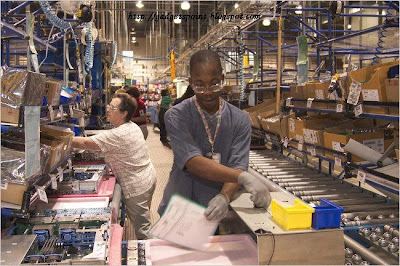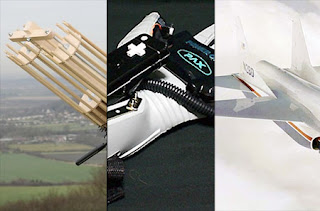Suit Over Faulty Computers Highlights Dell’s Decline - Top company is no exception in cheating the customers
After the math department at the University of Texas noticed some of its Dell computers failing, Dell examined the machines. The company came up with an unusual reason for the computers’ demise: the school had overtaxed the machines by making them perform difficult math calculations.
Dell, however, had actually sent the university, in Austin, desktop PCs riddled with faulty electrical components that were leaking chemicals and causing the malfunctions. Dell sold millions of these computers from 2003 to 2005 to major companies like Wal-Mart and Wells Fargo, institutions like the Mayo Clinic and small businesses.
“The funny thing was that every one of them went bad at the same time,” said Greg Barry, the president of PointSolve, a technology services company near Philadelphia that had bought dozens.
“It’s unheard-of, but Dell didn’t seem to recognize this as a problem at the time.”
Documents recently unsealed in a three-year-old lawsuit against Dell show that the company’s employees
were actually aware that the computers were likely to break. Still, the employees tried to play down the problem to customers and allowed customers to rely on trouble-prone machines, putting their businesses at risk. Even the firm defending Dell in the lawsuit was affected when Dell balked at fixing 1,000 suspect computers, according to e-mail messages revealed in the dispute.
The documents chronicling the failure of the PCs also help explain the decline of one of America’s most celebrated and admired companies. Perhaps more than any other company, Dell fought to lower the price of computers.
Its “Dell model” became synonymous with efficiency, outsourcing and tight inventories, and was taught at the Harvard Business School and other top-notch management schools as a paragon of business smarts and outthinking the competition.
“Dell, as a company, was the model everyone focused on 10 years ago,” said David B. Yoffie, a professor of international business administration at Harvard. “But when you combine missing a variety of shifts in the industry with management turmoil, it’s hard not to have the shine come off your reputation.”
For the last seven years, the company has been plagued by serious problems, including misreading the desires of its customers, poor customer service, suspect product quality and improper accounting.
Dell has tried to put those problems behind it. In 2005, it announced it was taking a $300 million charge related, in part, to fixing and replacing the troubled computers. Dell set aside $100 million this month to handle a potential settlement with the Securities and Exchange Commission over a five-year-old investigation into its books, which will most likely result in federal accusations of fraud and misconduct against the company’s founder, Michael S. Dell.
The problems affecting the Dell computers stemmed from an industrywide encounter with bad capacitors produced by Asian PC component suppliers. Capacitors are found on computer motherboards, playing a crucial role in the flow of current across the hardware. They are not meant to pop and leak fluid, but that is exactly what was happening earlier this decade, causing computers made by Dell, Hewlett-Packard, Apple and others to break.
According to company memorandums and other documents recently unsealed in a civil case against Dell in Federal District Court in North Carolina, Dell appears to have suffered from the bad capacitors, made by a company called Nichicon, far more than its rivals. Internal documents show that Dell shipped at least 11.8 million computers from May 2003 to July 2005 that were at risk of failing because of the faulty components. These were Dell’s OptiPlex desktop computers — the company’s mainstream products sold to business and government customers.
A study by Dell found that OptiPlex computers affected by the bad capacitors were expected to cause problems up to 97 percent of the time over a three-year period, according to the lawsuit.
As complaints mounted, Dell hired a contractor to investigate the situation. According to a Dell filing in the lawsuit, which has not yet gone to trial, the contractor found that 10 times more computers were at risk of failing than Dell had estimated. Making problems worse, Dell replaced faulty motherboards with other faulty motherboards, according to the contractor’s findings.
But Dell employees went out of their way to conceal these problems. In one e-mail exchange between Dell customer support employees concerning computers at the Simpson Thacher & Bartlett law firm, a Dell worker states, “We need to avoid all language indicating the boards were bad or had ‘issues’ per our discussion this morning.”
In other documents about how to handle questions around the faulty OptiPlex systems, Dell salespeople were told, “Don’t bring this to customer’s attention proactively” and “Emphasize uncertainty.”
“They were fixing bad computers with bad computers and were misleading customers at the same time,” said Ira Winkler, a former computer analyst for the National Security Agency and a technology consultant. “They knew millions of computers would be out there causing inevitable damage and were not giving people an opportunity to fix that damage.”
Source: via [nytime]



Comments
Post a Comment
Please don't forget to leave your comment.